More about: 6 Best Maui Hiking Tours
The second island of the archipelago is one of the best destinations in the world for hiking. The strong point is the diversity of the landscape: lush tropical rainforests alternate with bamboo forests and places marked by volcanic activity.
If you love nature and are looking for what to see and do in Maui, a hiking tour should be on your agenda. In this article I summarize all the information you need.
1. Haleakala Crater and Iao Valley Route
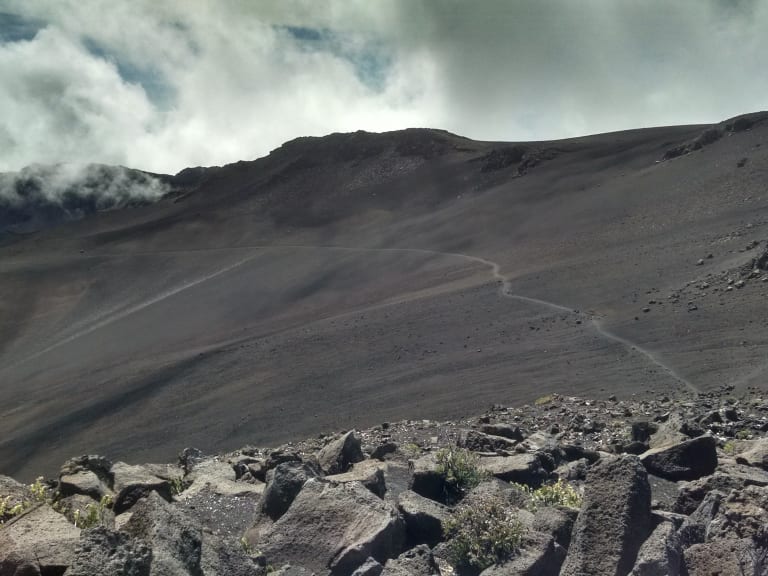
This hike will take you to the summit of Haleakala, a volcano surrounded by a protected park of more than 100 square kilometers. The natives believed that the demigod Maui trapped the sun in this place and released it in exchange for staying longer in the sky.
An air-conditioned vehicle will pick you up at your hotel and take you to the visitor center. There you will begin the ascent to the crater. Along the way you will have the opportunity to see the local fauna. Rare birds such as the 'Ua'u (the Hawaiian petrel) and the Nēnē, the Hawaiian goose , nest here.
Haleakala is characterized by the variety of its landscapes, from lush forests to arid valleys that look like something out of a science fiction movie. The panoramas are breathtaking and reward your efforts. The itinerary touches on the following locations:
- Makawao, a small town known for the paniolos, the cowboys of Hawaii. In the early 19th century, King Kamehameha III brought Californian cattlemen to the island to teach the locals how to ride horses and handle cattle. The cowboy past is evident both on the main street (Makawao Avenue) and in the surrounding farms.
Normally, this stage includes a stop for lunch. Personally, I recommend Makawao Garden Café or Polli's Mexican restaurant.
- Wailuku, a former sugar cane farming center converted into a tourist destination. Its most iconic buildings are the Ka'ahumanu Gothic church, the theater reminiscent of a Spanish mission and the Bailey House Museum
- Iao Needle, large rocks covered with lush tropical vegetation. They are located in the Iao Valley, a natural park of about 4,000 hectares
This route is very popular and it is therefore advisable to book well in advance. In my opinion, the Haleakala Crater hike is one of the best activities and tours in Maui.
- Price: between 180 € and 200 €
- Duration: more or less 10 hours
2. Hiking on the east coast
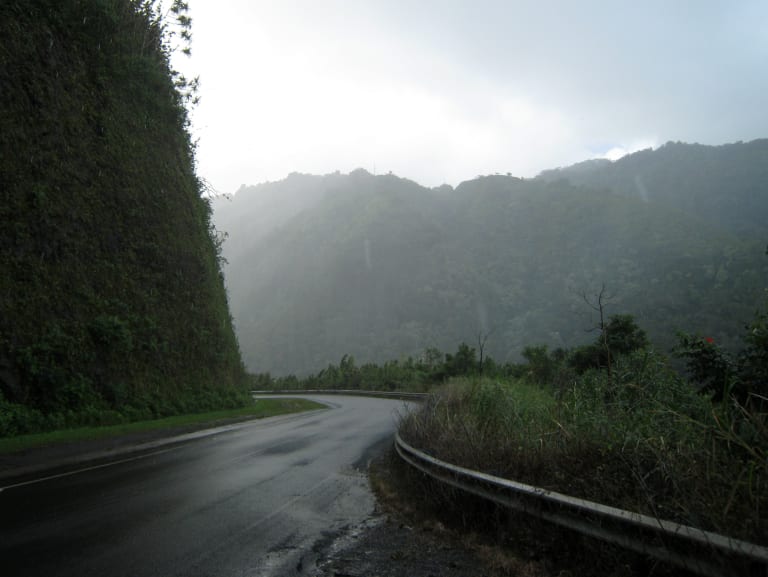
The east coast of Maui is an unspoiled area, dotted with waterfalls, tropical forests and great cliffs. Here runs the famous Road to Hana, an 85-kilometer road famous for its splendid scenery and colorful food stalls offering tourists water and fresh fruit.
This tour travels along a stretch of highway and, after a few kilometers, stops for you to enjoy a short hiking route. The guide will lead you through the jungle until you reach some waterfalls that form natural pools. Once there, you can regain your strength with a dip - don't forget your swimsuit at the hotel!
There is also a version that includes rappelling, a technique for descending vertical walls. In both cases, the routes are designed for small groups and do not involve more than 10 people.
- Price: around 150 €. In the case of the rappel, the amount exceeds 200 €
- Duration: 5 hours or a little more.
3. Jungle tour with chocolate tasting

A short but complete option. The tour starts at the King's Garden, a private garden near the famous Road to Hana. Within its grounds are some waterfalls and, of course, you can enjoy a refreshing dip.
During the walk, the guide will point out the most beautiful plants and will make you discover a cave linked to a Mo'o, mythological beings that can appear as beautiful maidens or water dragons.
At the end of the walk, you can enjoy a delicious chocolate tasting. By the way, if you like this delicacy, I also recommend the following sites/activities:
- Maui Chocolate Tour, a guided tour of a farm in Lahaina. Their history is somewhat new - they appeared in 2019 - but their products are incredibly rich (78 Ulupono St Suite 1, Lahaina)
- Maui Specialty Chocolates, a delicious store in Kahului. I recommend you try their peanut butter and chocolate mochis (180 East Wakea Avenue, Suite E, Kahului)
- Maui Chocolate & Coffea Tour, the route that combines two gastronomic classics. It is located in the center of the island, not far from the Kula Botanical Garden (1886 Naalae Road, Kula)
- Price: just under 150 €
- Duration: 2 to 3 hours
4. Honolua Ridgeline tour
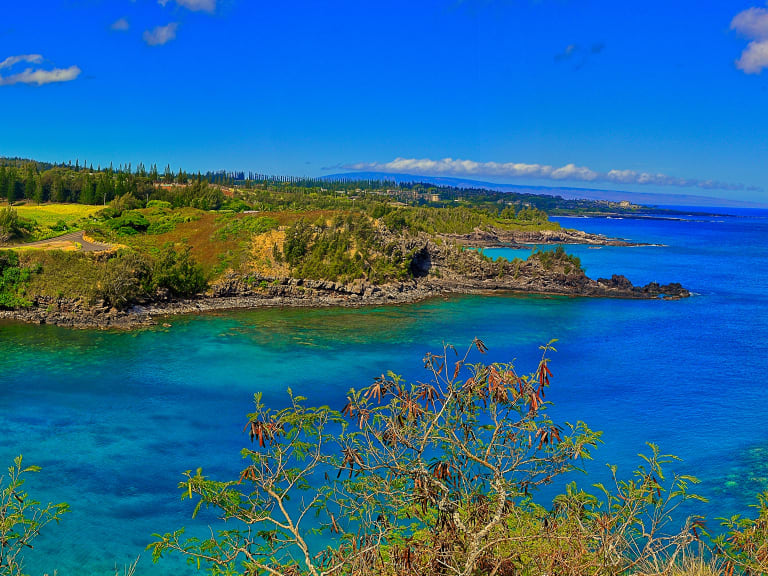
Honolua Bay is located in the northwest of Maui and is a privileged destination for surfers. Not everyone knows that a few meters higher up is a nature reserve where all the species of Hawaii's rainforest grow. Normally, the routes start in nearby Napili and the path runs just over 3 kilometers.
The trail passes through one of the wettest places on the planet. Thanks to the abundant rainfall, banyan trees, ferns and other plants grow luxuriantly and the guides will illustrate both their characteristics and the history of the place. This tour requires an intermediate level.
- Price: just under 150 €
- Duration: 3 to 4 hours.
5. West Maui hiking with private guide

The perfect option for those who want to forget about everything and concentrate only on the route. The cost is a little high - over 350 € - but includes transportation in an air-conditioned minivan, hiking poles, insect repellent, ponchos and a few bottles of water.
If you want the vehicle to come to your hotel or resort, you can request this service for an extra fee (only from Kaanapali, Lahaina, Wailea, Kihei and Kapalua).
The activity takes place in the mountains of West Maui, an unspoiled area and home to many historical and sacred sites of Hawaiian culture.
- Price: about 400 €
- Duration: 7 hours or slightly less
6. Waihee Ridge Adventure

Waihee Ridge is an 8-kilometer trail (round trip) through kukui, guava and fern forests. It is located in the west of the island, an area characterized by abundant rainfall and rapid vegetation growth. This trail is one of the few able to resist the inexorable advance of trees and shrubs.
The guide will take you to the summit where you will enjoy an incomparable panorama of the area. The hike usually starts early in the morning (between 7:00 and 8:00) and includes a few bottles of water.
Bring binoculars, you might see endemic birds such as the iiwi (small and with bright red feathers) or the Amakihi with its characteristic yellowish color.
- Price: just over 80 €
- Duration: 2 to 3 hours
When is the best time to hike?

Thanks to its warm climate, Maui is suitable for excursions every month. However, it would be preferable to avoid winter: it is the rainiest season and if rainfall is abundant, some trails may be closed or impracticable. To have some alternatives, I recommend you to read the post that explains what to do in Maui in winter.
What do I need to wear for hiking in Maui?
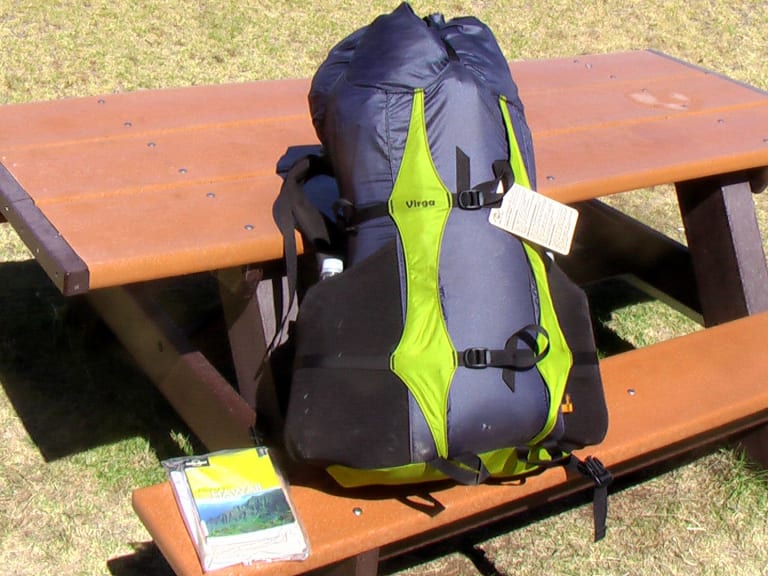
In any trekking excursion, footwear is the fundamental starting point. If you plan to do some simple routes, a pair of sneakers is enough. On the other hand, if you are looking for a challenge, I recommend wearing hiking boots. You can complete your outfit with:
- Breathable shorts
- Quick-drying T-shirt, your best ally against moisture and sweat. It washes quickly and dries in less than an hour, so you can take one or two and save space in your suitcase
- Cap to protect you from the sun
- Raincoat, a must-have accessory in your suitcase. In a tropical environment, rains are frequent, although in most cases, they end after a few minutes. If this is not the case, I advise you to think about another activity. You can find several options in the post that explains what to do in Maui when it rains
- Sunglasses
- Hiking underwear. Being made of synthetic material, usually polyester or lycra, it avoids chafing and bad smells
- Swimsuit, you might find a lake at the foot of a waterfall or a stretch of coastline irresistible. A refreshing dip always comes in handy
- Sports socks
- Backpack, if possible sports backpack. It will be useful to carry spare clothes, water bottles, handkerchiefs and everything you may need during the excursion. In any case, try to travel as light as possible.
Can I come across dangerous animals?

Fortunately not. The Hawaiian archipelago does not harbor lethal fauna and the only "danger" is represented by insects. The giant centipede and the red velvet ant can sting humans, but their bite is not fatal. They are, however, quite creepy but harmless.
Especially in the northern part of the island it is not uncommon to find the pua'a, the Polynesian pig. It is probably the first non-native species to arrive in Hawai'i and its numbers are steadily increasing.
If you see a herd, do not approach them. They might interpret it as an attack, especially if there are young. Their bite can transmit diseases such as hepatitis and tuberculosis.
Can I hike alone on Maui?

Yes, but I don't recommend it. As you know, it has nothing to do with the local wildlife, but for other safety reasons. It is always advisable to go out accompanied. After all, you will be in the middle of nature.
If you can't resist the lure of mountains and forests, I recommend these simple routes:
- Kapalua Coastal Trail, a 4-kilometer (round trip) itinerary between Kapalua and Honokahua bays. It is located near a hotel zone and parking is easy. It runs alongside the ocean and the views are breathtaking
- Waihou Spring Trail, a hike in the Upcountry Maui area. It is a perfect route if you visit the island in summer
- Seven Sacred Pools, a circular route of only one kilometer, perfect for a snack of the nature of Maui. The waterfalls form small lakes where swimming is allowed (weather permitting)
- Waimoku Falls, a path of about 6 kilometers (round trip) that crosses the Haleakala National Park. Its main attractions are the great Waimoku Falls and a splendid bamboo forest. To enter the natural area you must pay a ticket (about $ 15 if you go on foot)
- Nakalele Blowhole, a short hike (about 2 kilometers) that follows the coast in the town of the same name. Its big landmark is the blowhole, a hole in the ground that connects to an ocean cave. When the tide rises or the waves increase in intensity, a strong jet of water comes out of the cavity creating the effect of a geyser.
Do I need a car if I want to hike on my own?

Yes, it is the best option. Maui is very large and public transportation does not touch all parts of the island. In addition, you can put everything you want in the trunk to travel more relaxed. Before you get behind the wheel, here are some useful tips:
- Be careful when it rains. After all, you are on a tropical island and downpours require very careful driving. If it rains too much, go back to the hotel
- Parking is complicated. Hotels and resorts aside, you won't find too many areas to leave your car without paying
- Try to avoid traffic. In Maui, rush hour is at 16:00
- Don't wait too long to refuel. Before setting out on your hiking route, make sure you have a full tank of gas. Gas stations are hard to find in inland areas.
Are there mosquitoes on Maui?

Unfortunately yes. When the first westerners arrived here, the archipelago did not have one. It is believed that Aedes aegypti, the most common species, arrived here with the whaling ships.
Typically, their numbers increase both in the morning and shortly before dusk. Fortunately, Maui hosts fewer mosquitoes than other islands and the insects do not transmit any diseases.
Are there other adventure activities?

Of course they do! If you want to go faster, I recommend taking a look at the best Maui bike tours. On the other hand, if you prefer to reach the most secluded coves by sea, you can rent a kayak or book a catamaran ride. Finally, the island of Hawaii has a very adrenaline experience: a swim with sharks in Maui.
Do I need travel insurance for my Maui vacation?

It is not mandatory but I recommend you to book it before leaving. First of all, if your trip is cancelled for any reason, they will refund your flights and hotel. If your luggage is left at the departure airport, you will also be entitled to a refund.
In addition, Hawaii belongs to the United States, a country known for its high health care costs. An insurance covers you for any unforeseen event and eliminates (or significantly reduces) the sums you will have to spend in case of illness or other medical problems.
Other Tips
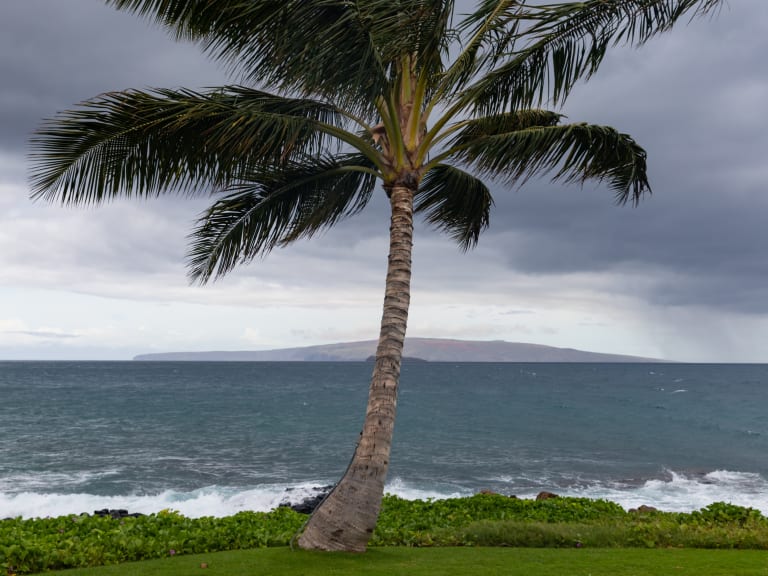
You are almost ready to travel to the archipelago. Here are a few last tips to plan the perfect route:
- Don't drink the water from the springs and streams you will find along the way. After all, you are in a tropical country! Please note that the tap water in Maui is completely safe
- In case you decide to hike on your own, make sure you get back before sunset. Just check the sunset time online
- Do not leave the markedtrails or you risk getting lost
- In the most isolated areas, phone coverage is poor. If you are traveling alone, download the map in advance
- Do not enter private property
- To keep abreast of any weather or emergency updates, you can contact the automated number 808-986-1200, extension 1.













